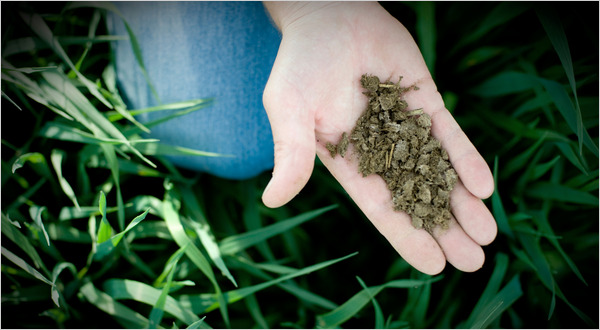Down on the Farm, an Endless Cycle of Waste
[Source: Henry Fountain for The New York Times]
GUSTINE, Tex. — Day and night, a huge contraption prowls the grounds at Frank Volleman’s dairy in Central Texas. It has a 3,000-gallon tank, a heavy-duty vacuum pump and hoses and, underneath, adjustable blades that scrape the surface as it passes along.
In function it is something like a Zamboni, but one that has crossed over to the dark side. This is no hockey rink, and it’s not loose ice being scraped up. It’s cow manure.
Lots of cow manure. A typical lactating Holstein produces about 150 pounds of waste — by weight, about two-thirds wet feces, one-third urine — each day. Mr. Volleman has 3,000 lactating Holsteins and another 1,000 that are temporarily “dry.” Do the math: his Wildcat Dairy produces about 200 million pounds of manure every year.
Proper handling of this material is one of the most important tasks faced by a dairy operator, or by a cattle feedlot owner, hog producer or other farmer with large numbers of livestock. Manure has to be handled in an environmentally acceptable way and at an acceptable cost. In most cases, that means using it, fresh or composted, as fertilizer. “It’s a great resource, if used properly,” said Saqib Mukhtar, an associate professor of biological and agricultural engineering at Texas A & M University and an expert on what is politely called manure management.
But as the increasing incidence of environmental and health problems linked to agriculture makes clear, when manure is mismanaged the nutrients in it can foul streams, lakes and aquifers; the pathogens in it can contaminate food products; and the gases it produces, including ammonia, methane and bad-smelling volatile compounds, can upset neighbors and pollute the atmosphere.
Even with best practices, manure can cause environmental headaches. So researchers are working on ways to improve its handling, to modify the nutrients in it and to develop alternative uses.
Mr. Volleman, who came to Texas from his native Luxembourg 16 years ago, takes pride in his operation, which produces about 25,000 gallons of milk a day. “It’s all about keeping it clean, keeping it comfortable and producing high quality milk,” he said, adding that what is good for his cows is good for him. “They’re writing my paycheck.”
Dairies differ from feedlots, poultry operations and hog farms in how they handle manure. At a feedlot, for example, manure is often collected only once every six months, after the thousands of fattened cattle have been shipped out. Dairy operators seem like neatniks by comparison, but even among dairies, manure management varies according to location, climate, regulations and other factors.
At a large operation like Mr. Volleman’s, it is the inexorability of excrement, as much as the sheer volume, that defines the waste-handling process. A cow’s digestive system, with its series of forestomachs, is built to handle lots of roughage. And you cannot turn it off.
So among the 40 employees at Wildcat Dairy are some whose main task is to handle the manure, 24 hours a day. They collect it from the huge open-sided barns, which house up to 1,200 cows each. The animals bed down in sand, but there is a concrete alley running the length of each barn for food and others for excrement.
While the cows are at the rotary parlor — a stainless-steel merry-go-round of milking stalls that the Holsteins ride every eight hours around the clock — a worker on a tractor tows the tank-pump contraption up those manure alleys. The worker hops off the tractor as needed to rake solids in the bedding area into the alleys for collection.
When the tank is about half full, the worker drives it to a nearby patch of dirt, opens a valve and spreads — sprays, really — the manure out to dry. Twice a week, the solids are scraped into windrows and then spread on fields as fertilizer.
Even dried, manure contains a lot of water, so it is not economical to truck it very far — beyond about 10 miles, it is cheaper for a farmer to buy inorganic fertilizer. Some dairy producers compost their manure, making it more valuable as fertilizer, but composting costs time and money.
Mr. Volleman’s manure is spread only on his fields and those of nearby farmers. “We bring the manure to their fields, they spread it out to grow crops, we bring the crops back to feed the cows,” he said. “So it’s kind of a circle — a closed circle.”
The liquids in the manure are part of a closed circle as well. Everything at the dairy is sited with gravity in mind, so that all liquids — the runoff from the drying area, wet manure left behind in the alleys, wastewater from the milking parlor and rainwater — drain into the first of three interconnected lagoons that are lined with compacted clay.
